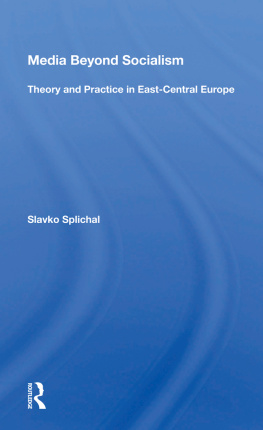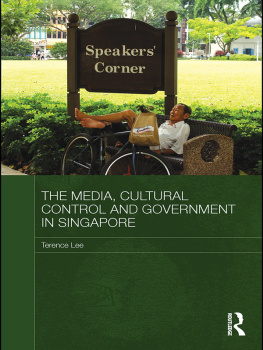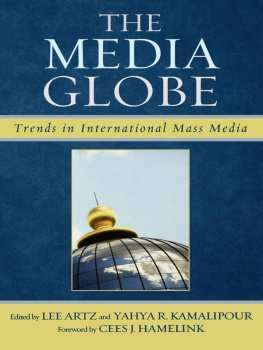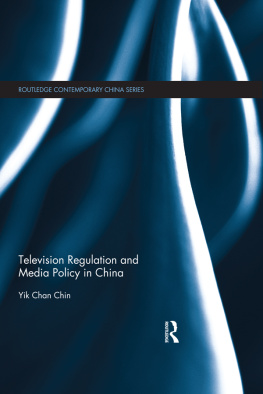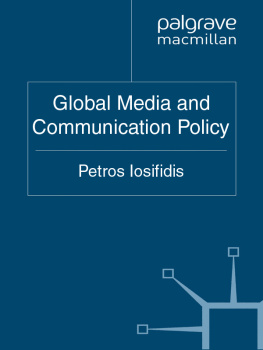
First published in the UK in 2018 by
Intellect, The Mill, Parnall Road, Fishponds, Bristol, BS16 3JG, UK
First published in the USA in 2018 by
Intellect, The University of Chicago Press, 1427 E. 60th Street,
Chicago, IL 60637, USA
Copyright 2018 Intellect Ltd.
All rights reserved. No part of this publication may be reproduced, stored in a retrieval system, or transmitted, in any form or by any means, electronic, mechanical, photocopying, recording, or otherwise, without written permission.
A catalogue record for this book is available from the
British Library.
Cover designer: Aleksandra Szumlas, Holly Rose
Copy-editor: MPS Technologies
Production manager: Mareike Wehner
Typesetting: Contentra Technologies
Print ISBN: 978-1-78320-886-9
ePub ISBN: 978-1-78320-887-6
ePDF ISBN: 978-1-78320-888-3
Printed and bound by Hobbs, UK
This is a peer-reviewed publication.
Supported by the Open Access Publication Fund of the University of Salzburg.
Contents
Preface
This new textbook is a follow-up to the Media in Europe Today book by the Euromedia Research Group (Intellect 2011), which turned out to be especially relevant for graduate and post-graduate media policy university courses across Europe. However, due to fast changes in the media ecosystem, the previous Media in Europe Today needed rethinking and an update. Being a collective project, this new book was discussed in several group meetings (Copenhagen, Cambridge and Budapest) and has gained coherence and consistency over time.
Like the previous Media in Europe Today, this new peer-reviewed book provides a comprehensive overview of the current European media in a period of more or less disruptive transformation. It maps the full scope of contemporary media policy and industry activities while also assessing the implications of new technologies and radical changes in distribution and consumption on media practices as well as organizations and strategies.
Bringing together contributions from media scholars in the Euromedia Research Group teaming up with invited authors, this book represents the continuation and further development of a long tradition of media policy books written by the group (Sage 1986, 1992, 1999; Nomos 2007; Intellect 2011; Routledge 2015). Focusing on the development of media structures and media policy within Europe, this volume benefits from 25 years of experience in the observation and critical analysis of trends within European media. This book is truly comparative in scope, combining the study of media systems with a thematic approach. Particular attention is paid to the state of affairs at the level of media platforms, approaching these from a functional perspective (i.e. news provision, opinion and debate, entertainment). The book tackles critical issues in comparative media policy, regulation and governance.
This new volume is first and foremost designed for teaching. Each of the chapters provides lecturers with the necessary input for weekly teaching on media policy and media systems in Europe. In addition to courses and modules that deal specifically with media policy, the book is also suitable for courses or modules that deal with media management, international media industry, media policy and institutions, global media and media economics. Despite the success of the previous book (sold out in 2015) amongst university students, this is not only an academic book or a textbook. The book provides relevant insights for steering media policy and active citizen participation.
More than ever, media policy initiatives and decisions have a fundamental impact on citizens and on their mediated lives. Legacy media and social media, accessible through multiple online and mobile platforms, are ingrained in citizens lives and they do matter in terms of social representations and visions of society. Media policy and regulation are relevant matters for all committed citizens and not merely for scholars.
In different ways, this book attempts to unpack the complexities and paradoxes of decision-making processes with impact on the media, public spheres and, more in general, on the wider symbolic environments. Contrary to common assumptions, there is no such thing as a clear-cut policy cycle comprising a linear chain of agenda-setting (definition of issues to be handled), policy formulation (setting objectives and selecting policy instruments), legitimation (ensuring support for policies), implementation (use of the necessary resources to carry out the policy) and, finally, evaluation (assessing the impact of the policy). Going through this book, it becomes clear that media policy and media regulation do not follow a fluid, bottom-up or top-down process. Pressures, interests and social actors interact continuously, thus providing a fast-changing, at times opaque and always challenging research object.
Structure and contents
The book is divided into twelve chapters taking into consideration an average of taught weeks in European countries during a semester course. In spite of the difficulties in defining European borders, European contents or European policies or markets, the book chapters represent an effort to decipher the European dimension of media policies. The book also articulates the national levels to highlight the bottom-up and top-down reciprocal influences. The comparative dimension is transversally relevant as comparing cross-border data helps to read the differences and similarities between countries and to develop a complex and comprehensive overview of the European media.
The very first chapter of this book by Hannu Nieminen provides an overview of the underlying concerns of the entire book. With a chapter called Why Study Media Policy and Regulation?, the author makes it explicit and deepens the core concerns of the entire book. In a detailed manner, Hannu Nieminen explains that all European countries make policy choices concerning the media that have impact on peoples lives (PSM, Internet, media subsidies, diversity, harmful content, etc.). The reasons for studying the media as presented in the chapter are the fundamental justification for bringing this book to the attention of the readers: media policy and regulation affect media systems, and their contents have a pervasive and gradual impact in the ways societies are shaped and reconfigured.
Chapter 2, Is Content Still King? Trends and Challenges in the Production and Distribution of Television Content in Europe, authored by Tim Raats, Jeanette Steemers and Karen Donders, provides an overview of recent trends in the television industry and related policy challenges. The authors stress the different origins and histories of television production in Europe and concentrate on present-day production challenges in an era of multiple platforms, global abundance of outlets, shifts towards personalized viewing on-demand and the rise of transnational formats and cross-border content circulation. This chapter clarifies the very different policy responses at national and European levels supporting content production such as drama, animation, documentaries and minority programmes.
In Chapter 3, Tom Evens addresses Media Economics and Transformation in a Digital Europe. The author examines the paradox of increasing concentration of ownership whilst the total amount of media outlets in Europe continues to grow and to fragment audiences and advertising revenues. This article pays particular attention to the omnipresence of digital intermediaries and shows how the online and mobile technologies are disrupting the economic base of legacy media. Advertising revenues are migrating to digital platforms and traditional media organizations have no alternative but to rethink their business models.


